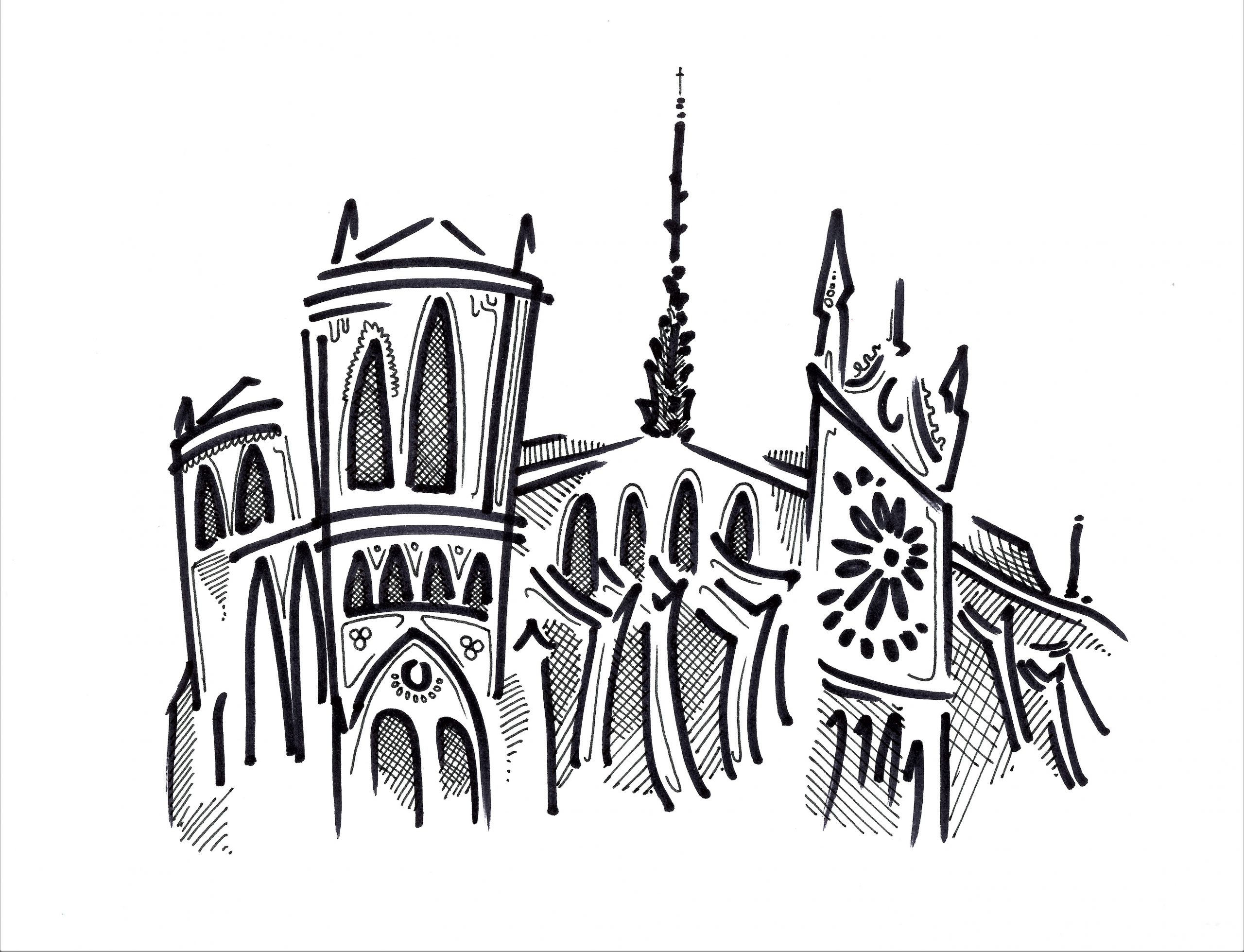News of the fire at Paris’ beloved Notre-Dame cathedral was everywhere. We all saw it – a dark Parisian skyline lit up by engulfing flames as the 850-year-old cathedral blackened in the smog. Panning away from the nightmarish scene, however, was to look upon a united Parisian community, gathering together for their cherished Notre-Dame – the building that had always punctuated their cityscape so protectively. Amazingly, within hours of the fire, donations from French companies poured in and President Macron publicly pledged to restore the building.
This overwhelming reaction seemed to make something clear. Of course, it showed the cathedral’s profound importance in France’s cultural legacy, but more so, it made evident something else: the symbolic and emotive power of the architecture we build. And knowing this, it seems ironic that the places we love the most are all too often the ones we built hundreds of years ago. The case of Notre-Dame raises broader questions about the way we design our buildings today and why, I believe, we’re all too often getting it wrong.
Why does architecture matter? Who cares? The case for good architecture seems sentimental, detached from the genuine needs of the public. But then, why is it that we would gladly flock to the old chapels of Florence, marvel at the Byzantium structures of Istanbul or gaze in wonder at the Sydney Opera House? Architecture clearly influences the way we feel and behave. As Professor Joseph Campbell said, “if you want to see what a society really believes in, look at what the biggest buildings on the horizon are dedicated to.” More so, “ we dedicate our skylines to oil industries and sports companies. It seems we have allowed for the homogenising architecture of corporate interests to dictate the design of our cities.”
Architect Vishaan Chakrabarti explains in his TED talk that, like the burst of consumer products, the iconic thud of the (cheaply made and expensively sold) tower block can be attributed to the growth of industry and mass production. “We mass produced glass and steel and concrete […] and we deployed them in mind numbingly similar ways across the planet,” he explains. The sameness of these buildings strips away any sense of place. What we love about Edinburgh, for example, in its use of lovely dark sandstone and regional design, is its evocation and embracement of the local.
The city of Ulaanbaatar, Mongolia, is another example. With its newly open-air village in its center, the affordable houses and public buildings evoke the local in their use of local materials, technology and colours. The buildings “interpret the nomadic traditions […] of the nation of Mongolia.” In short, it is architecture that responds to its people on a human level.
But crucially, as Chakrabarti explains, “this is not an aesthetic issue.” Good architecture helps to create good communities. Critically acclaimed writer Paul Goldberger argues, “if it only reminds us of the past, [architecture] would have limited value. [It must] connect to something that is part of our daily life right now.”
What differentiates the thudding, anonymising blocks, from, say, the affordable, Tietgen Residence Hall in the Ørestad, Copenhagen is the intrinsic aim to do more than perform a practical function. Architecture done right is that which not only promotes civic pride but nurtures community. I certainly can’t imagine anyone weeping should Trump Tower burn down.
As Chakrabarti continues, good architecture is “an issue of international consequence. Hundreds of thousands of people are moving to cities” and the average city dweller has a much lower carbon footprint than suburban counterparts. To attract urbanites, we need our spaces to be great. They must look towards the future by feeding communal interaction and civic pride. Architects of the many mass-produced tower blocks simply do not prioritise design that lifts communities up. They cut costs with isolating corridors and dwarfing facades.
The question architects need to ask themselves is what can architecture do for the community. The uniting power of Notre-Dame, as we recently saw, is a testament to the incredible way buildings affect the way we feel, the way we interact. Architects, in designing our new homes, community centers and cities must do more than sustain community; they must nurture it.
Illustration: Carlos Finlay

